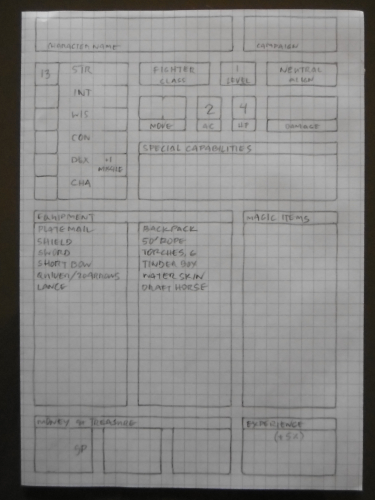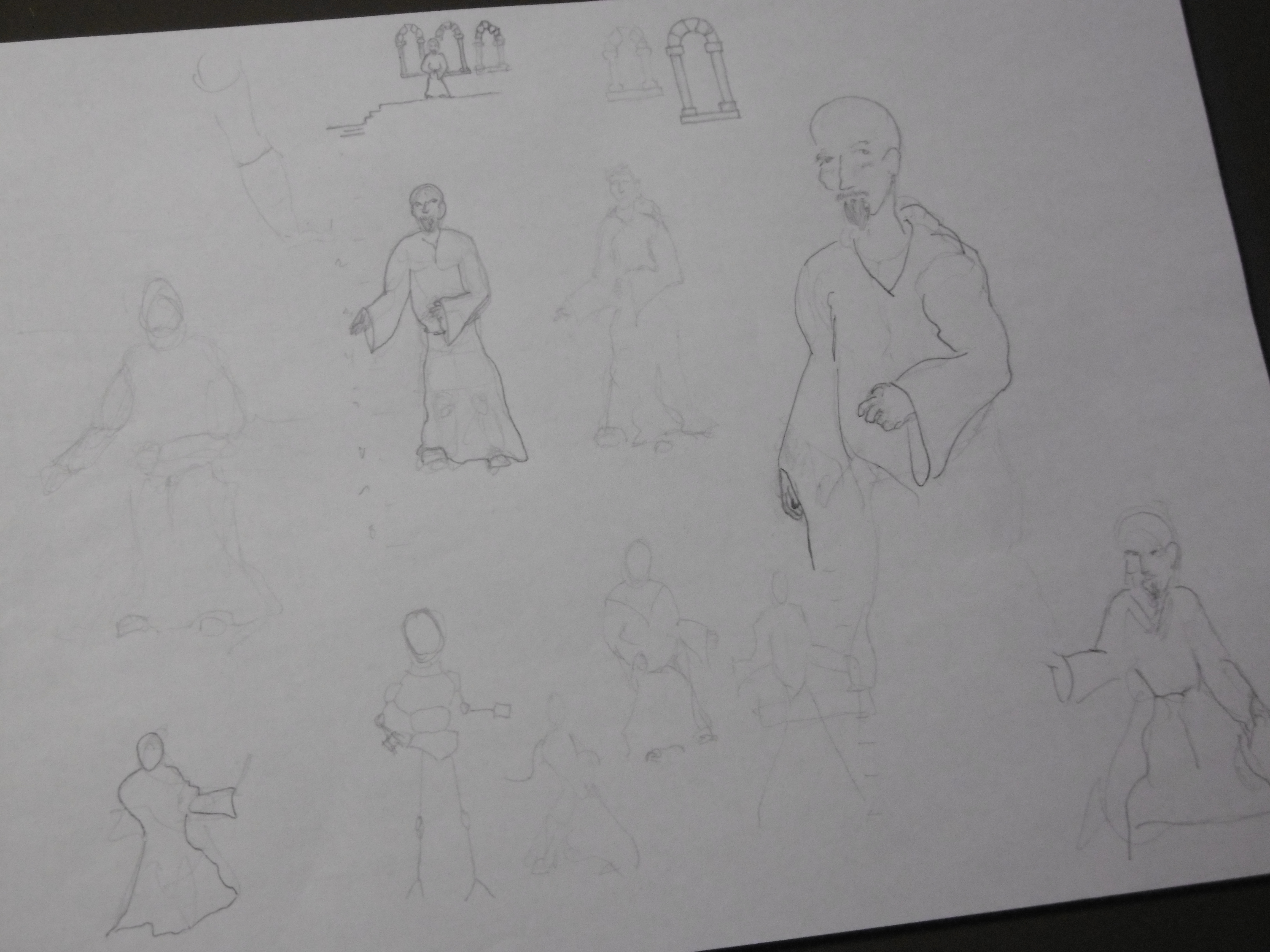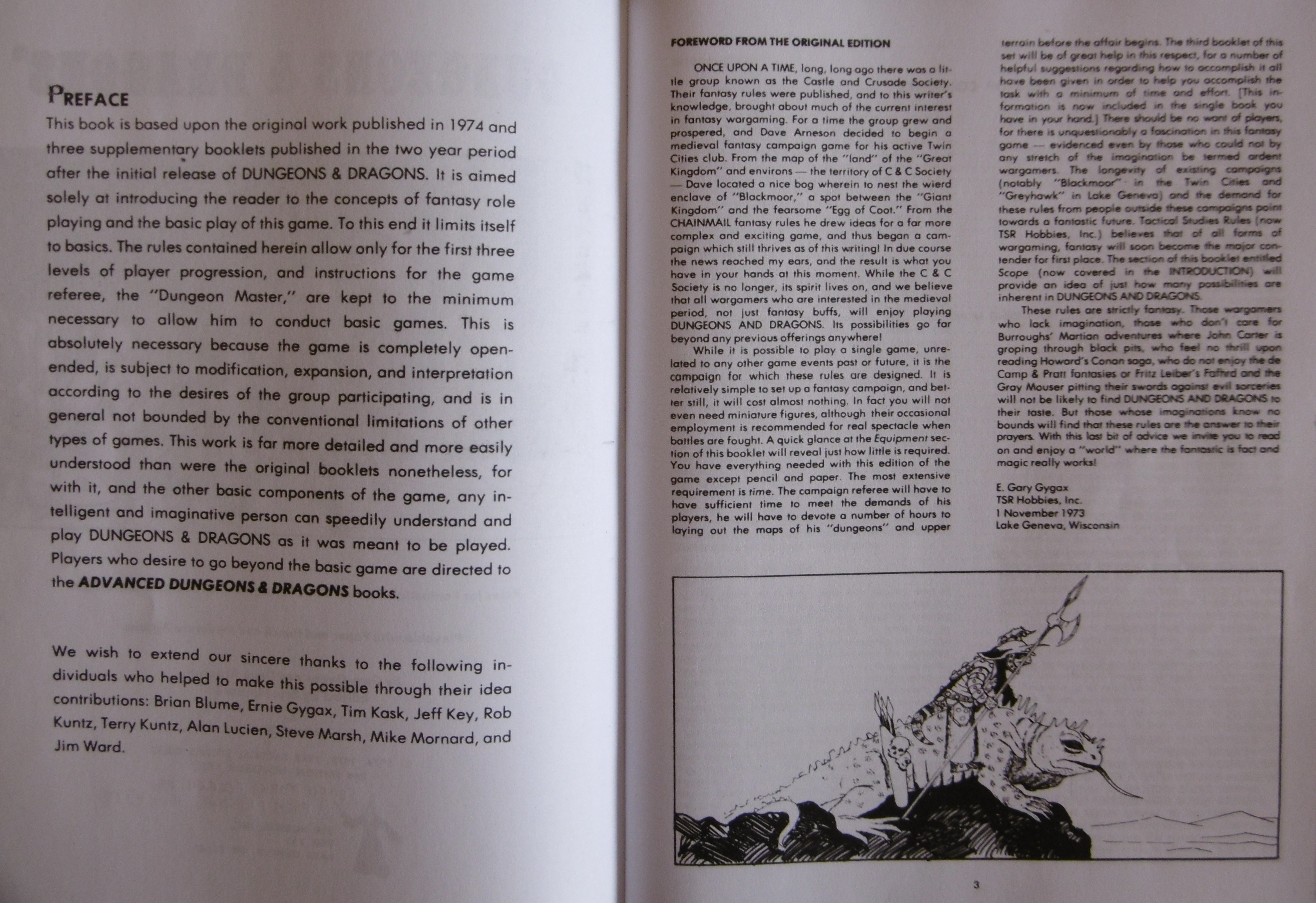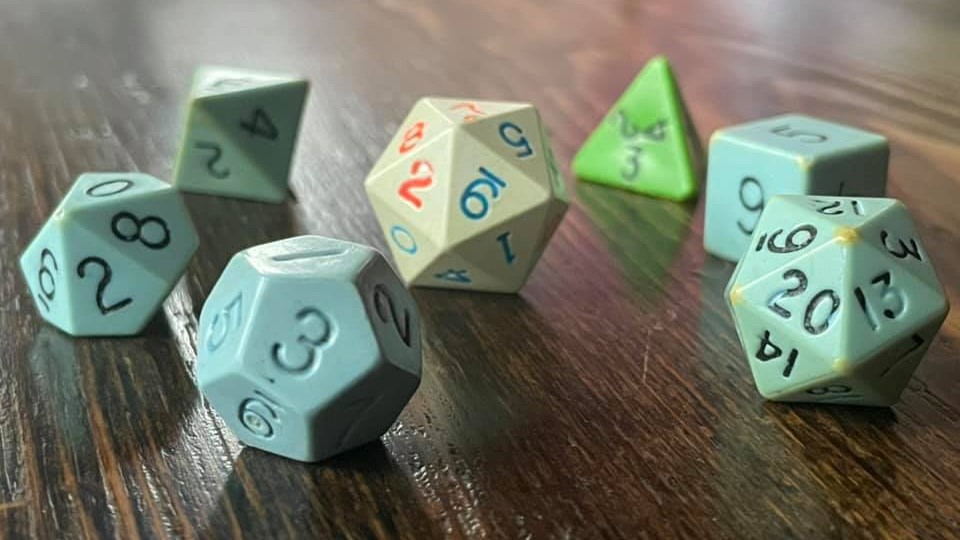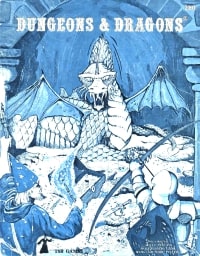Lava Caves, Clacking Mandibles, and Red Glowing Glands
The old man, sprawled across the table with a dagger in his back, grabbed my attention. I forgot all about the Scroll of the Dead and the town’s imminent destruction by volcanic eruption. I wanted to solve the mystery of the old man’s murder.
After Garth convinced me the adventure lay rather in the old man’s quest, I added “Scroll of the Dead” to the list of equipment I carried.
In shining armor, a pack on my back, bow strapped to it, lance and shield in hand, and sword at my side, I mounted the draft horse and rode into the hills below the smoking volcano. This neutral human fighter may have trailed behind the horse with a plow in his hands the day before, but today he was going on an adventure. He would save the town from destruction and win his fortune. Then he would buy a helmet and become a real knight.
“You come to the mouth of a cave…,” said Garth.
I dismounted, tied the reins to a shrub, and secured the lance on the saddle.
“What’s in the cave?” I said.
“It’s dark inside. You can’t see anything.”
I looked at the equipment list on my sheet. “I have torches. I take one out of my pack and look into the cave.”
“You have to light the torch first.”
“Do I have matches or something?”
“That’s what the tinder box is for. It has flint and a piece of steel you can strike together to make a spark.”
Now I was learning outdoor survival. Flint and steel seemed more promising than rubbing two sticks together, which Garth and I tried many times, to no effect, when we were kids.
I lit the torch and peered inside the cave.
“It’s a natural tunnel. It’s ten feet wide and goes north about twenty feet until it opens into another space, but you can’t see what’s there. What do you do?”
“I go in the tunnel.”
The tunnel opened into a small chamber. Garth explained that the caves were made by hot lava running through them. I didn’t understand how that worked, but the more important detail was that, in addition to the way I came in, there were two ways out.
“The tunnel to the east is quiet. Down the west tunnel, you can hear a clacking noise. Which way do you go?”
“I go toward the noise.”
“It might be a monster.”
“I draw my sword.”
Sword in one hand, torch and shield in the other, I crept down the tunnel. I have since learned that carrying a torch in the shield hand is a good way to set one’s face on fire. Garth didn’t seem to be concerned.
The clacking noise was made by the mandibles of a giant beetle.
“It has spots above its eyes that glow red like fire, and it runs toward you.” Garth made clacking noises with his tongue. “What do you do?”
“I use my sword to defend myself.”
“Roll a twenty-sided die to see if you hit it.”
“Which one is that?”
“That one.” Garth pointed at the rounded dice with the small triangles.
I held it between thumb and forefinger. It was light, as if it lacked consequence. I let it fall to my palm. It bounced around on smooth edges in my cupped hand.
“You want to roll high,” said Garth.
I put all my will into the dice and launched it like a marble across the notebook.
“Eleven.” I read the number off the top triangle.
“Not high enough,” said Garth. “You miss. Now it’s the monster’s turn.”
Garth picked up the dice. “It’s called a fire beetle. If it bites you it takes away some hit points.”
I understood that hit points were life points, so I was relieved when Garth announced I avoided the beetle’s bite.
“It’s your turn. You need a fifteen to hit it.”
I rolled. “Seventeen!”
Garth gave me another dice. “You do one to eight points of damage with your sword.”
I rolled the dice, and the beetle gushed goo from its abdomen and stopped clacking its mandibles. The spots above its eyes still glowed red.
“Why do the spots glow?”
“They’re glands. They glow for up to six days after the beetle is dead. You can cut them out and use them for light.”
“Cool. I want to do that.”
“You don’t need more light. You already have a torch.”
“Yeah, but it would be neat to carry a red glowing gland!”
